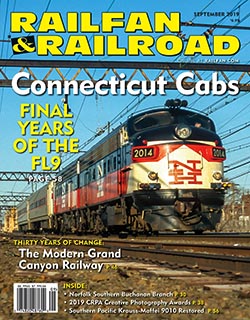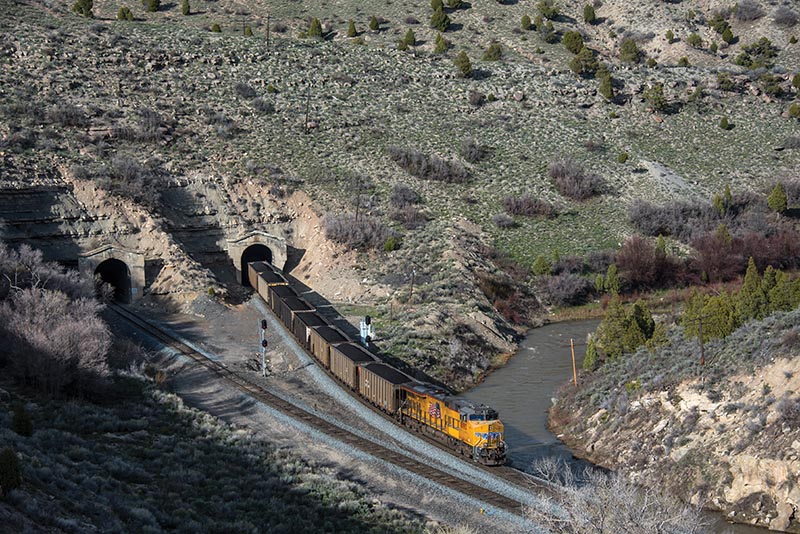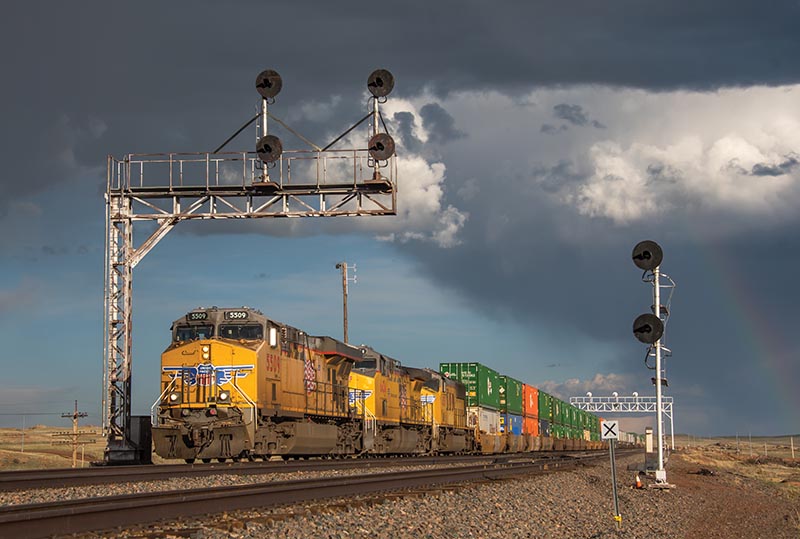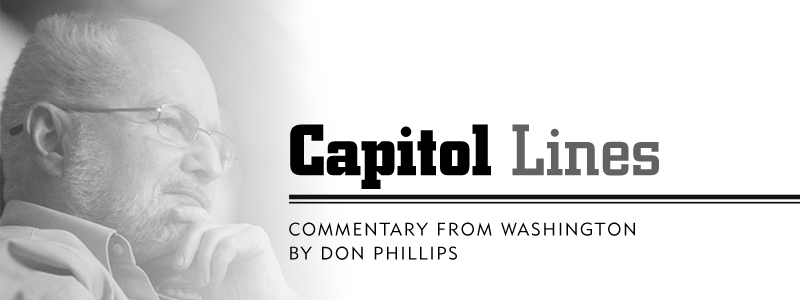 I have been somewhat confused by the many different reports of what is happening to rail freight shipments in North America. The Association of American Railroads puts out excellent reports that I read thoroughly, but they don’t fully answer this question: why is this happening? I have been searching the internet, but that leaves me even more confused.
I have been somewhat confused by the many different reports of what is happening to rail freight shipments in North America. The Association of American Railroads puts out excellent reports that I read thoroughly, but they don’t fully answer this question: why is this happening? I have been searching the internet, but that leaves me even more confused.
I stumbled across a report the other day that made me sit up and take notice. It was very interesting. It gave an overview of the history of railroading going back 180 years, and what happened at each phase of that history. The last two-thirds of the report dealt with what is happening in the current century. Wow, was it good.
For some reason, I didn’t read the name of the author at the beginning of the report. If I had, I wouldn’t have been so surprised. He was someone I have known and respected for decades — Jim Blaze. I have lost contact with Jim for a while. In the report, he is described as “a railroad career economist with an engineering background and a strategic analysis outlook.” He worked at the U.S. Railway Association creating Conrail, then 21 years with Conrail, and 17 years with the rail engineering firm Zeta Tech Associates, plus numerous other jobs. The report says he is now “primarily a teacher and writer.”
Blaze’s description of railroad history begins with the period from 1840 to 1860 when railroads were growing. That growth accelerated with the beginning of the Civil War until about 1910, with the growth slowing until 1920. “Competing against the horse and buggy and water barge transport, railroads were the kings of both freight and passenger transportation,” he wrote.
The railroads’ freight ton-miles and geographic coverage peaked at about 75 percent during World War II, but after the war everything started slipping. By 1970, the amount of freight carried by rail had slipped to about 38 percent, but rail’s share of intercity freight revenues had fallen to about 15 percent. The expansion of state highways and the building of the new interstate system, as well as improvements in truck performance and increased weight capacities, contributed to the decline of the railroads’ share of freight.

A Union Pacific westbound coal train is pushed into Kyune Tunnel on the former Rio Grande line over Soldier Summit in Utah on May 11, 2019. Most forecasts show a slowdown in shipments of coal by rail in the future. Steve Barry photo
On the other hand, a lot of things were going well for the railroads. Deregulation of the railroads and engineering improvements, like axles that allowed freight cars to carry heavier loads, plus the longer trains that appeared, helped improve freight traffic volumes. Long-distance moves of low-sulfur coal out of the Powder River Basin and the invention of the double-stack container freight car helped railroads compete with trucks.
For one year, 2008, all the basic rail traffic measures turned downward. This was known as the Great Recession. But the recovery began almost immediately. For most commodities, a slow recovery came between 2012 and 2014 — but a strange thing was happening. Freight railroads became more profitable. In fact, rail profitability increased dramatically. The author does not explain why, and I am not qualified to even guess.
Rail traffic has had its ups and downs. The most consistent year-over-year growth has been intermodal traffic for at least the last decade. In 2019, even intermodal has taken a slight dip.
“General merchandise commodities today and likely through the 2025–2035 period will be dominated by trucking,” the report said. “General merchandise railcar traffic that competes with trucking simply isn’t keeping pace with trucking’s annual growth rate. Rail cars of general goods (excludes grains and coal) might see only a long-term growth rate of zero to 2 percent year-over-year. General merchandise commodities that are carried via intermodal rail likely will be competitive and continue to grow at a year-over-year rate in the 2 percent to 5 percent range. To some economists, this would be significantly slower growth than expected a decade ago.”
Coal growth “is clearly slowing,” the report said. “Unless there is a breakthrough combination of regulatory, engineering, and alternative fuel pricing patterns, no major U.S. railroad is projecting long-term growth in the coal segments in their business plans.”

A westbound Union Pacific intermodal train passes through Hermosa, Wyo., under searchlight signals and a receding storm on May 13, 2019. Intermodal traffic has been the most consistent year-over-year growth for U.S. railroads in the past decade, but slipped slightly in 2019. Steve Barry photo
Shipping crude oil in tank cars “is best viewed as a medium-term growth commodity, subject to projections of new pipeline construction as the cheaper alternative. Overall, rail ton-miles will likely continue to shrink noticeably. The previous predictions by many of the 2035 outlook — of high rail ton-mile growth patterns — are unlikely when predictions from a decade ago are reconsidered in light of revised economic conditions.”
Railinc, which sponsored Blaze’s report, had a few things to say at the end of the report. “The size of the railcar fleet as monitored by Railinc is expected to continue at its current 1.6-plus million level. Replacement units will be added as fleet aging continues, but the fleet will not grow. The composition of the railcar fleet will change over time. Different types of railcars will grow (chemical tank cars) or shrink (boxcars) as market demand changes. As noted above, a possible shift toward short-haul and semi-trailer intermodal (instead of containers) would, if it occurs, be the railcar type for highest mid- to long-term growth.”
Until now, I have mostly quoted other people. From here down is strictly my opinion. I am not that good at predicting the future and I don’t think anyone else is either. Look at what people were saying just a decade ago and how much that has changed. Looking a decade into the future, we may laugh at what was being said today.
Suppose someone comes up with a formula for clean coal that actually works. Coal mines would reopen everywhere. Suppose we elect a president who says the federal government must pay the full cost of increasing capacity for both freight and passenger trains, lots of them. Anything is possible. Remember that.
—DON PHILLIPS is a veteran newspaper reporter and a magazine columnist writing about railroads and transportation policy for more than 40 years.
 This article appeared in the September 2019 issue of Railfan & Railroad.
This article appeared in the September 2019 issue of Railfan & Railroad.



